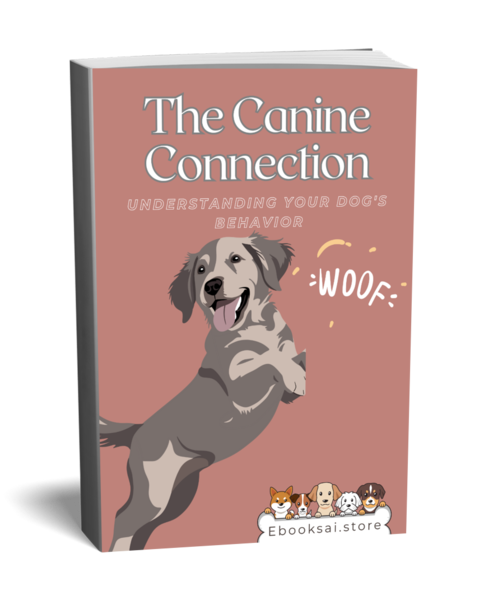🐾 The Canine Connection: Unlocking the Secrets Behind Your Dog’s Behavior
Dogs are more than just pets—they're family. But understanding your furry friend’s behavior isn’t always easy. One moment they’re zooming across the living room, and the next they’re hiding under the couch. If you’ve ever found yourself wondering, “What is my dog trying to tell me?”—you’re not alone.
Fortunately, The Canine Connection: Understanding Your Dog’s Behavior offers a powerful guide to decoding the language of dogs. Here’s a breakdown of key lessons every dog lover should know to strengthen their relationship with their four-legged companion.
1. Understanding the Why Behind Behavior
Dogs communicate through body language, vocalizations, and facial expressions. A wagging tail doesn’t always mean happiness—it could also signal anxiety or excitement depending on its speed and position. By observing your dog’s posture, ears, and tail, you can better interpret what they’re feeling and respond appropriately.
Tip: A relaxed posture and soft gaze usually signal contentment. Stiffness or a tucked tail might mean fear or stress.
2. The Power of Positive Reinforcement
Training isn’t about dominance—it’s about communication. Positive reinforcement, like treats or praise, helps reinforce desired behavior in a kind and effective way. Dogs thrive on consistency and encouragement.
Pro Tip: Always reward your dog immediately after they perform the correct behavior. Timing is everything!
3. Socialization is Essential
Whether you have a new puppy or a seasoned senior, dogs benefit from socialization. Exposure to new environments, people, and other animals builds confidence and helps prevent behavioral issues down the road.
Insight: The critical window for puppy socialization is between 3–14 weeks. But even adult dogs can improve through positive, guided experiences.
4. Body Language: Your Dog’s First Language
From raised hackles to play bows, canine body language tells a detailed story. Understanding these cues helps prevent miscommunication and can even avoid conflict during interactions with other dogs.
Watch for: Flattened ears and a low, slow wag might mean discomfort, while a play bow says “let’s have fun!”
5. Recognizing Emotions Like Joy, Fear, and Anxiety
Just like humans, dogs have a wide emotional spectrum. Learning to identify signs of stress—like whining, excessive grooming, or destructive behavior—can help you intervene early and provide comfort.
Solution: Create a safe, enriching environment with structure, mental stimulation, and physical activity to ease anxiety.
6. Training Tailored to the Dog
Every breed—and every dog—is different. A Border Collie may thrive with high-intensity training and agility tasks, while a Bulldog might prefer short, focused sessions with lots of praise. Recognizing breed-specific traits can help you tailor your approach.
7. Create a Dog-Friendly Environment
Your home should be a sanctuary. Dogs benefit from having their own space, regular routines, and a calm emotional atmosphere. Your stress affects them more than you might think!
Quick Fix: Set up a quiet corner with your dog’s bed, toys, and water bowl—it's their personal retreat.
8. Quality Time Builds Unbreakable Bonds
Whether it’s a walk in the park, a tug-of-war session, or just lying together on the couch, spending meaningful time with your dog nurtures trust and happiness. Dogs are social beings who thrive on connection.
Final Thoughts
Understanding your dog isn’t just about obedience—it’s about empathy. The Canine Connection teaches us that by tuning into our dog’s cues, we don’t just train them better—we love them better. Whether you’re a new dog parent or a lifelong canine enthusiast, building a bond rooted in trust, respect, and communication will always lead to a happier, healthier relationship.
Want to dive deeper into dog behavior? Check out The Canine Connection: Understanding Your Dog’s Behavior—a must-read guide for anyone looking to enhance their connection with their canine companion.
📘🐶 Because a well-understood dog is a well-loved dog.












